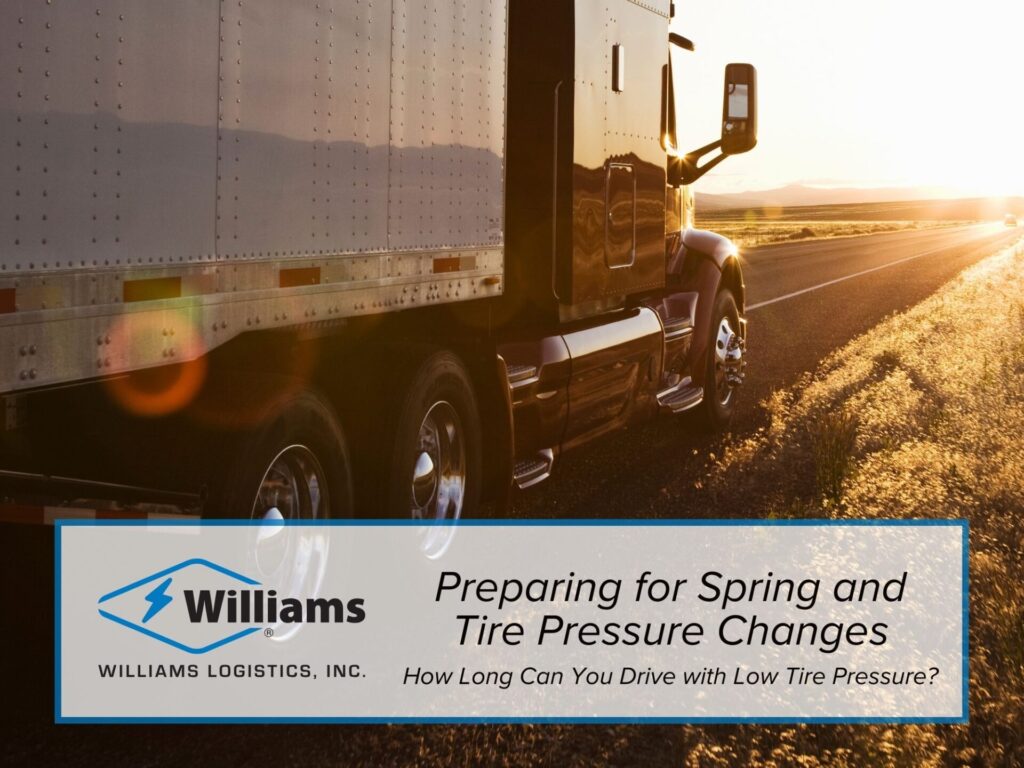As winter begins to fade away and the days start to get longer, truck drivers across the country are eager for the start of spring. With warmer temperatures and longer days, spring is a welcome change for those who have been battling icy roads and cold weather for months on end.
But as the season changes, truck drivers need to be aware of how the transition from winter to spring can affect their vehicles, particularly their tire pressures. It's no secret that tire pressure is crucial for maintaining optimal performance and safety on the road. As temperatures fluctuate during the spring season, tire pressures can be significantly impacted.
When the temperatures rise in spring, the air inside the tires expands, causing the tire pressure to increase. On the other hand, cooler temperatures in the evenings or during cold snaps can cause tire pressures to decrease. Not maintaining the correct tire pressure can have a significant impact on tread life for truck drivers.
Effects on Tire Treads
Furthermore, maintaining the proper tire pressure is crucial for truck drivers. Not only does it ensure better fuel efficiency and overall performance, but it also plays a significant role in extending the tread life of the tires. Incorrect tire pressure can lead to uneven wear patterns, which can ultimately affect the longevity of the tires and even compromise the safety of the vehicle.
How Long Can You Drive with Low Tire Pressure?
So how long can truckers drive with low tire pressure before it becomes a problem? The answer is not straightforward, as it depends on a variety of factors such as the weight of the load, the condition of the tires, and the temperature outside. However, truck drivers should never ignore low tire pressure warnings and should always take immediate action to inflate their tires to the recommended levels.
When tire pressures are too low, the tire can wear out more quickly and unevenly. Low tire pressure can also lead to increased fuel consumption, reduced handling and stability, and even tire blowouts. It also puts additional stress on the tire, causing it to wear out more quickly. This can be especially dangerous for truck drivers who are traveling long distances and carrying heavy loads.
How Long Can You Drive with Inflated Tire Pressure?
On the other hand, high tire pressure can also be detrimental to tread life. Truck drivers should be cautious of driving with high tire pressure. When tires are overinflated, the center of the tread wears out more quickly, leading to reduced tread life and decreased traction.
While it may seem like a minor issue, overinflated tires can lead to premature wear and tear, reduced fuel efficiency, and decreased handling. This can be particularly problematic for truck drivers who rely on their tires to grip the road and navigate safely. Truck drivers should regularly check their tire pressures and adjust them as needed to ensure optimal performance and safety on the road.
Final Thoughts
In essence, as spring arrives and temperatures begin to warm up, truck drivers need to pay close attention to their tire pressures. Maintaining the proper tire pressure is essential for fuel efficiency, maximizing tread life, and safety. By regularly checking their tire pressures and adjusting them as needed, truck drivers can enjoy a smooth and safe journey through the changing seasons.
